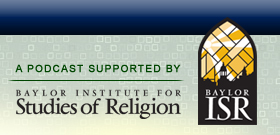

|
Kevan Harris on Iran’s Islamic Revolution and Green Movement  Date: June 22nd, 2014
 With Iran in the news a lot as of late, we take a look at this nation’s recent history dating back to the 1979 Islamic Revolution, the regime’s consolidation, and the recent Green “Revolution” or, perhaps more appropriately, “movement” with Kevan Harris, associate director of Princeton University’s Mossavar-Rahmani Center for Iran and Persian Gulf Studies. The conversation begins with Tony asking Prof. Harris about Iran’s current influence in the Middle East region and whether the country’s Islamic revolution has cast a long shadow over contemporary events. Kevan’s answer is nuanced and surprising. Comparing the events in Iran with earlier revolutions, such as the Bolshevik Revolution in Russia, he talks about how after efforts to export revolution were frustrated the regime instead sought to build “political Islam in one country” and that Iranian realpolitik is not simply about political Islam. He also highlights how there are two competing schools of thought existing within Iran’s diplomatic corps: (1) the best offense is a good defense; and (2) the best defense is a good offense. He notes how the current president, Hassan Rouhani, tends to fall in the former camp and how his policies have a great deal of continuity with the secular Pahlavi regime prior to the ’79 revolution. Our discussion throughout the entire interview is not only informed by a historical understanding of a single nation, but is a tour de force of social scientific theories of politics and social mobilization. We then take our social science microscope to look at the causes of the 1979 revolution. Kevan retains a fairly skeptical view of structural theories of revolution and places emphasis instead on day-to-day events and how they matter in terms of social mobilization. Interestingly, Iran witnessed significantly more grassroots social mobilization than any other prior 20th century revolution (and even the French Revolution). Prof. Harris covers the prior state-building experience of Iran, and notes that 1979 was not so much a case of state breakdown (as many classic revolutions were), but was an effect of a massive social mobilization. He discusses the role of the “bazaar-mosque” alliance and Ayatollah Ruhollah Khomeini. The stabilization and consolidation of the revolutionary regime becomes our next topic. Our discussion covers the role of the military, religious legitimacy, and the need to absorb the massive mobilization of the revolutionary era. Kevan’s own research covers the importance of the state’s ability to build a rather extensive welfare system that affected all levels of Iranian society, especially the middle class. In doing so, he casts doubt upon alternative explanations for regime stabilization that rely upon religious legitimacy and/or oil. Kevan points to how both the state “pushed down” into elements of society that the shah’s regime had previously ignored, but also how different social groups “pushed up” to create a “social contract” that promised social mobility at both the individual and national level — a vision wherein people would see their own lives improve as the Iranian nation would become a more modern state on the world stage. The typical vision of an authoritarian clerisy lording over a passive population is challenged significantly by Prof. Harris. This fascinating discussion of how the Islamic regime has managed to negotiate its power over society then informs our examination of what has been called the “Green Revolution” following the 2009 elections. Kevan points out that it is hard to call it a “revolution” given that it really has not had a transformative effect on the polity and thus would best be considered a “movement.” Tony asks about why the color green is prominent in this imagery and learns a thing or two about Islam. We also take a more personal turn as Kevan shares his own experiences of being plopped down in the middle of this popular uprising only two days after the election. A discussion of how sociologists approach fieldwork follows. We then explore why the Green movement dissipates rather quickly as compared to the 1979 mobilization. The explanation proffered by Prof. Harris relies on newer understandings of social movements and their micro-mobilizing nature. He talks of “brokered exuberance” and that the failure of the protests to persist were not solely a matter of selective state repression. Our conversation finishes with some speculation on the future of Iran and the Middle East region as a whole. He notes the interesting irony that Iran has been the most stable of countries in the Middle East at a time when many regimes seem to be unraveling. Recorded: June 18, 2014. RELATED LINKS Kevan Harris’s biography at Princeton University’s Mossavar-Rahmani Center for Iran and Persian Gulf Studies. “How to Reform a Theocracy: A Domestic Playbook for Iran’s Moderate President,” by Kevan Harris in Foreign Affairs. “An Election Uprising in Iran,” by Kevan Harris. The Cup, the Gun, and the Crescent: Social Welfare and Civil Unrest in Muslim Societies, edited by Crabtree, Parker, and Azman. (Contains a chapter by Kevan Harris.) Neither Gods nor Emperors, by Craig Calhoun (mentioned in interview). RELATED PODCASTS Matthew Derrick on the Geography of the Umma. William Inboden on Religious Liberty, Foreign Policy, & the Arab Spring. Ann Wainscott on the Politics of Islam in Morocco. Monica Toft on Religion, Terrorism, and Civil War. Daniel Philpott on Religious Resurgence and Democratization.
Leave a Reply |
 Search The Podcast
To search the podcast, type a term and click the Search button.
  Browse Podcast Categories
Select a category below to browse the podcast:
   |














